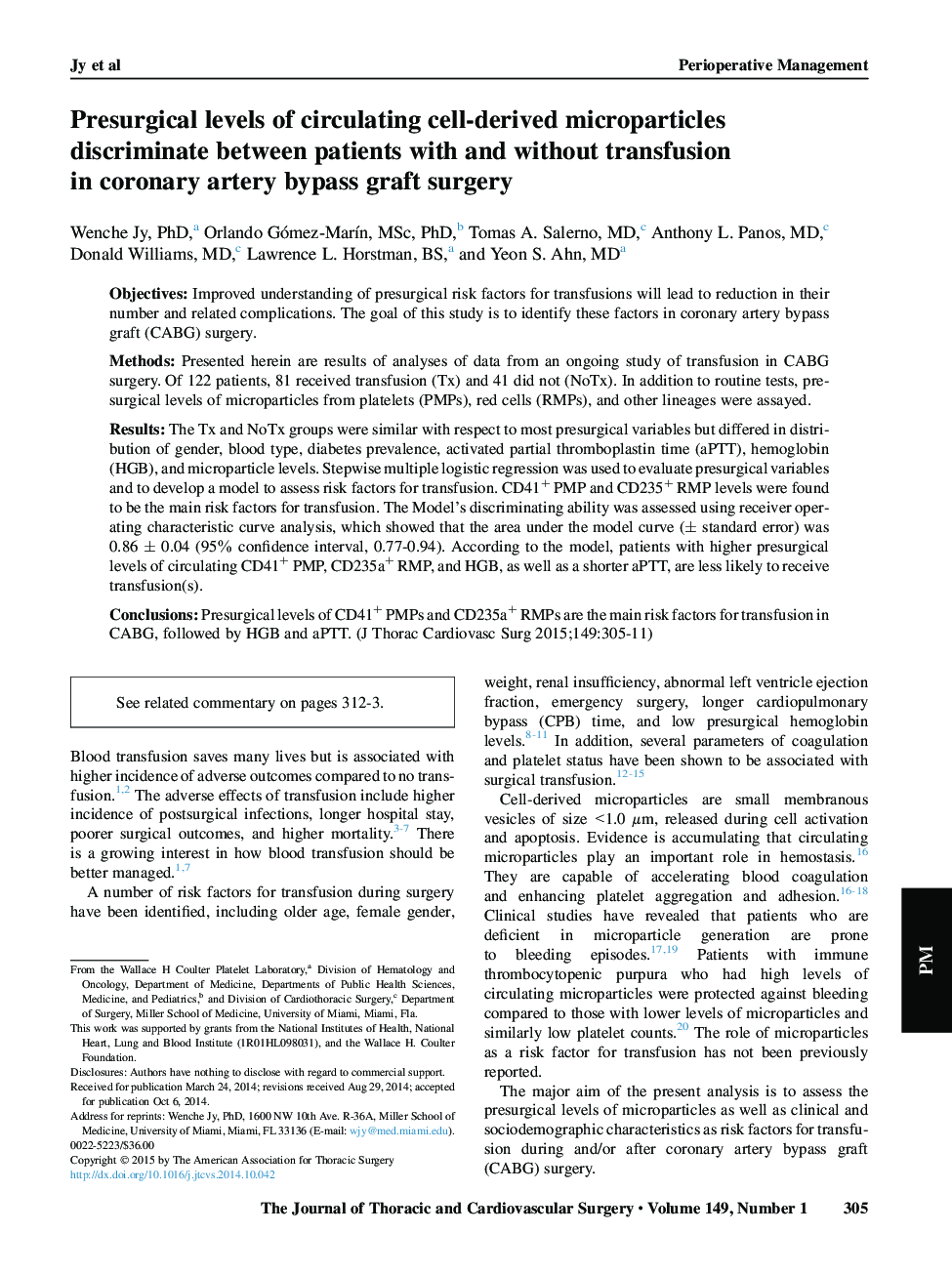| Article ID | Journal | Published Year | Pages | File Type |
|---|---|---|---|---|
| 2980091 | The Journal of Thoracic and Cardiovascular Surgery | 2015 | 7 Pages |
ObjectivesImproved understanding of presurgical risk factors for transfusions will lead to reduction in their number and related complications. The goal of this study is to identify these factors in coronary artery bypass graft (CABG) surgery.MethodsPresented herein are results of analyses of data from an ongoing study of transfusion in CABG surgery. Of 122 patients, 81 received transfusion (Tx) and 41 did not (NoTx). In addition to routine tests, presurgical levels of microparticles from platelets (PMPs), red cells (RMPs), and other lineages were assayed.ResultsThe Tx and NoTx groups were similar with respect to most presurgical variables but differed in distribution of gender, blood type, diabetes prevalence, activated partial thromboplastin time (aPTT), hemoglobin (HGB), and microparticle levels. Stepwise multiple logistic regression was used to evaluate presurgical variables and to develop a model to assess risk factors for transfusion. CD41+ PMP and CD235+ RMP levels were found to be the main risk factors for transfusion. The Model's discriminating ability was assessed using receiver operating characteristic curve analysis, which showed that the area under the model curve (± standard error) was 0.86 ± 0.04 (95% confidence interval, 0.77-0.94). According to the model, patients with higher presurgical levels of circulating CD41+ PMP, CD235a+ RMP, and HGB, as well as a shorter aPTT, are less likely to receive transfusion(s).ConclusionsPresurgical levels of CD41+ PMPs and CD235a+ RMPs are the main risk factors for transfusion in CABG, followed by HGB and aPTT.
